Navigate the poignant world of biblical tear bottles, revealing ancient expressions of grief, love, and remembrance that echo through history.
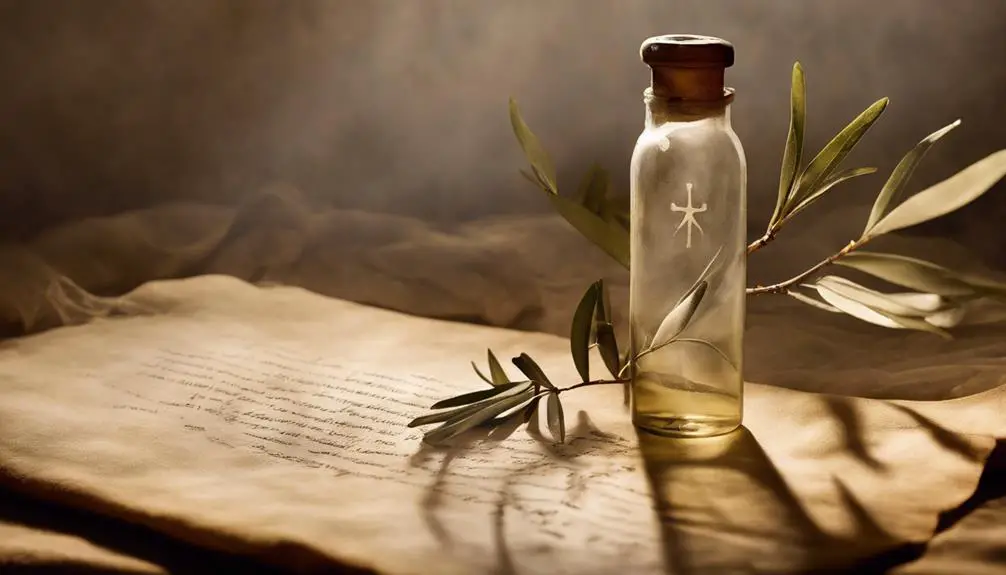
Tear Bottles in the Bible
Interestingly, over 700 references to tears and weeping are found within the Bible, highlighting the significance of emotional expression in ancient times.
As you explore the concept of tear bottles, you'll uncover their historical origins, biblical references, and the deep symbolic meanings they held in cultures past and present. These small, yet profound vessels served not only as a physical repository for tears but also as a symbol of mourning, remembrance, and even joy in various contexts.
The intricate relationship between these artifacts and their cultural, religious, and emotional implications invites you to consider their relevance in today's society and how they've influenced modern interpretations and artistic representations.
Key Takeaways
- Biblical texts like Psalm 56:8 highlight tear bottles as symbols of grief and divine remembrance.
- In the Bible, tear bottles represent the sanctity of human emotions and spiritual significance.
- Tear bottles in biblical narratives symbolize a connection between earthly grief and the divine, underscoring hope and devotion.
- The use of tear bottles in ancient rituals is reflected in biblical references, emphasizing their role in mourning and memorials.
Historical Origins
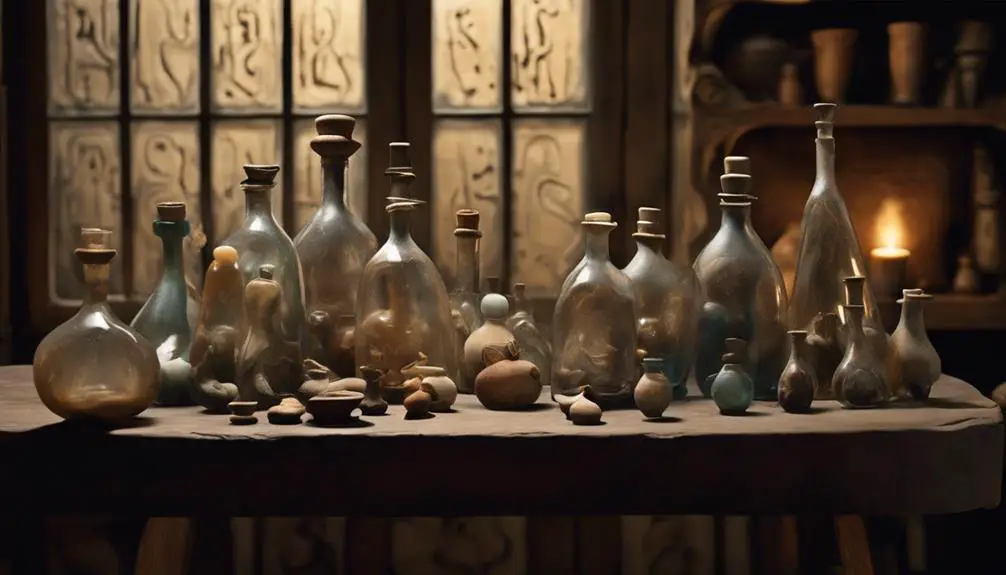
The concept of tear bottles, often mentioned in biblical texts, originates from ancient Near Eastern cultures, where they served as tangible expressions of grief and mourning. You'll find that the manufacturing methods and geographic distribution of these artifacts reveal a deep cultural significance and a widespread practice.
Delving into the manufacturing methods, ancient craftsmen primarily used glass to create tear bottles, employing techniques like core-forming, where molten glass was wrapped around a sand or clay core, then shaped and decorated. This process required significant skill, indicating the value placed on these objects. Some bottles were also made of pottery, offering a more accessible option for the broader population.
The geographic distribution of tear bottles was extensive, spanning across the Near East in regions like Egypt, Mesopotamia, and Persia, and later spreading to the Greco-Roman world. This wide distribution highlights the universal appeal and significance of the practice of collecting tears during periods of mourning. It wasn't confined to a single culture or location; rather, it was a shared human expression of grief and remembrance, bridging communities and cultures across the ancient world.
Biblical References

Reflecting on the widespread cultural significance of tear bottles, it's evident that their mention in biblical texts underlines a profound spiritual and emotional dimension to the practice of collecting tears. The scriptures, particularly through Psalm citations, reveal the depth of emotional expressions encapsulated within this tradition.
- Psalm 56:8 stands out for its direct reference to God recording our sorrows, metaphorically storing every tear we've shed. This passage not only highlights the divine acknowledgment of human grief but also the sacredness attributed to tears.
- Lamentations 2:18-19 encourages the pouring out of the heart like water before the Lord, symbolizing the act of releasing one's deepest sorrows and longing for divine intervention. This mirrors the emotional catharsis that tear bottles represent, serving as a physical manifestation of one's innermost feelings.
- The practice of collecting tears in 2 Kings 20:5, where God sees Hezekiah's tears and promises healing, illustrates the profound belief in the transformative power of sincere emotional expression. It signifies that tears aren't merely signs of weakness but potent symbols of faith and supplication.
These examples underscore the intricate connection between tear bottles and the expression of grief, devotion, and ultimately, hope within the biblical narrative.
Symbolic Meanings
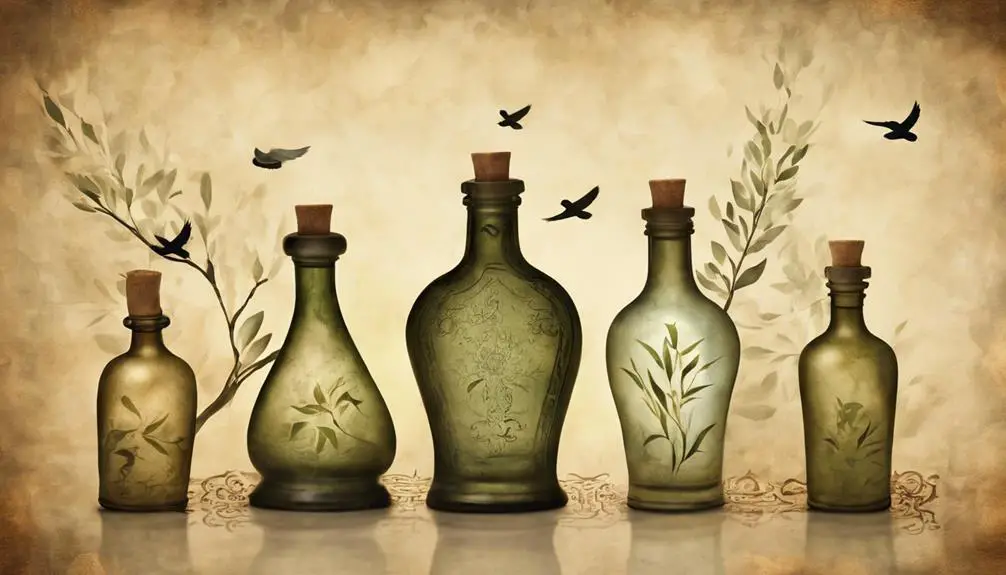
In exploring the symbolic meanings of tear bottles, it's crucial to understand how they serve as vessels not only of grief but also of profound spiritual significance. These containers, mentioned in biblical texts, encapsulate more than mere tears; they represent a tangible manifestation of emotional expression. Within the context of ancient traditions, tear bottles are emblematic of the depth of human sorrow, yet they also embody a profound connection between the earthly and the divine.
Analyzing these vessels through a scholarly lens reveals that tear bottles in biblical times weren't merely for collecting tears but were integral to grief rituals. They symbolized the sanctity of human emotions, suggesting that every tear shed was worthy of recognition and remembrance. This practice underscores the belief in the value of individual suffering and its acknowledgment in a community or spiritual context.
Furthermore, the act of collecting tears in bottles highlighted the importance of mourning as a shared experience, fostering a collective healing process. By physically preserving tears, individuals communicated their grief and solidarity, bridging the gap between personal loss and communal support. Through this lens, tear bottles serve as a poignant reminder of the complexities of emotional expression and the rituals that honor them.
Cultural Practices
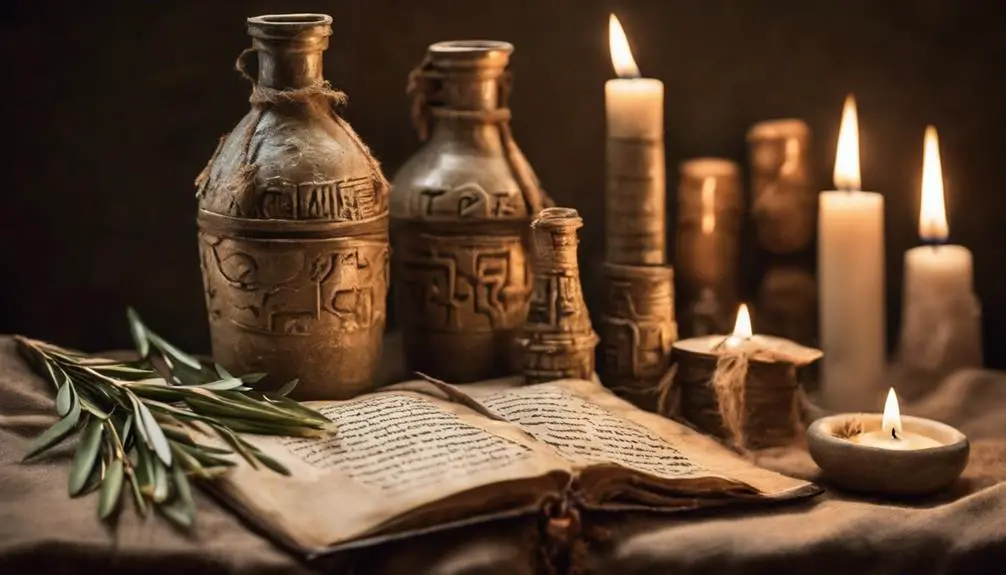
How did various cultures integrate the practice of using tear bottles into their mourning rituals, and what does this reveal about their beliefs surrounding death and grief? Across time, funeral customs and mourning rituals have varied greatly, but the consistent use of tear bottles highlights a universal acknowledgment of grief's depth and complexity.
Analyzing these practices offers insight into how societies view death and the mourning process:
- Ancient Egyptians believed collecting tears would appease the gods and help secure a safe passage for the deceased into the afterlife. This practice underscores their view of the afterlife as a continuation of the earthly journey, where emotional expressions play a pivotal role in the transition.
- Victorian England saw the use of tear bottles as a token of remembrance and a measure of one's sorrow. The length of time a widow would wear mourning attire and display the tear bottle reflected the social expectations surrounding grief and propriety.
- Roman traditions involved placing tear bottles in tombs as a symbol of respect and enduring love, suggesting that they viewed tears not just as an expression of grief but as a testament to the deceased's impact on the living.
These practices reveal a profound respect for the grieving process, emphasizing the importance of acknowledging and expressing sorrow.
Modern Interpretations

While exploring the historical use of tear bottles reveals much about ancient and Victorian attitudes toward grief, examining their role in contemporary society sheds light on evolving perceptions of mourning and remembrance. Today, you'll find that tear bottles serve as emotional artifacts, symbolizing the modern approaches to grief rituals. They're not just relics of the past but have transformed into poignant expressions of loss and love in the present.
Aspect |
Historical Use |
Modern Interpretations |
|---|---|---|
Symbolism |
Mourning and remembrance |
Evolving grief rituals |
Material |
Glass, pottery |
Varied, including crystal |
Usage Context |
Funerals, personal mourning |
Memorials, therapy sessions |
Emotional Value |
High |
Even higher |
Public Perception |
Often misunderstood |
Increasingly appreciated |
This table illustrates the transition from traditional to contemporary uses, emphasizing how tear bottles have become more recognized as significant emotional artifacts in today's society. They encapsulate the essence of modern grief rituals, offering a tangible connection to the emotions experienced during loss. As artifacts, they bear witness to the personal and collective journey of mourning, making them invaluable in understanding the nuanced ways in which we navigate remembrance and express sorrow in the current era.
Artistic Representations
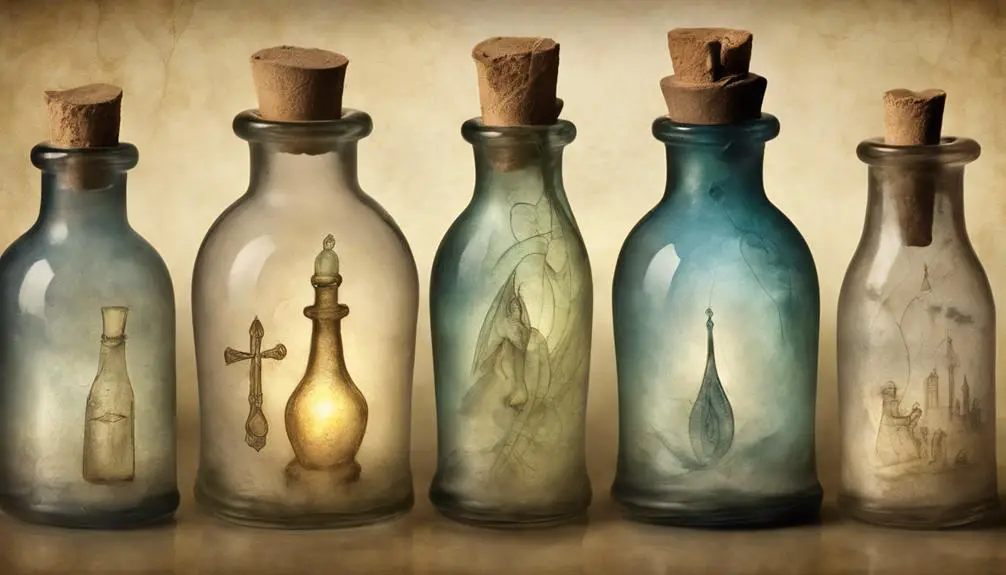
Artistic representations of tear bottles capture the complex interplay between personal loss and public commemoration, reflecting societal attitudes toward mourning. Through the use of various material techniques, contemporary artists delve into the essence of sorrow and remembrance, bringing ancient customs into modern consciousness. Their works serve not only as a means of personal expression but also as a commentary on the universality and timelessness of grief.
- Material Techniques: Artists employ a diverse range of materials, from traditional glass to modern synthetics, to convey the fragility and permanence of memories. These choices often symbolize the dual nature of tears as both transient and enduring.
- Contemporary Artists: A growing number of artists explore the motif of tear bottles, each bringing their unique perspective. Their works challenge viewers to reconsider the ways in which society commemorates loss, urging a deeper, more introspective engagement with the act of mourning.
- Symbolic Interpretations: Beyond mere representations, these artworks often incorporate symbolic elements that enhance their emotional resonance. By integrating historical motifs and personal narratives, artists create layers of meaning that invite reflection on the complexities of grief and remembrance.
In doing so, they not only honor the tradition of tear bottles but also contribute to a broader discourse on the nature of sorrow and the art of remembering.
Frequently Asked Questions
How Can One Authenticate an Ancient Tear Bottle, Distinguishing It From Replicas or Other Ancient Containers?
To authenticate an ancient tear bottle, you'll need to closely examine manufacturing techniques and undergo chemical analysis. Look for unique marks or imperfections characteristic of historical production methods. Chemical analysis can reveal the composition of the material, offering clues about its age and origin.
Comparing these findings to known data on ancient containers can help you distinguish authentic tear bottles from replicas or other types of vessels. It's a meticulous process but essential for accurate identification.
Are There Any Specific Rituals or Ceremonies in Contemporary Cultures That Still Use Tear Bottles?
Imagine you're attending a modern memorial service where a tear bottle is passed among mourners, capturing their grief. This practice, though rare, highlights the poignant intersection of material origins and production techniques in contemporary rituals.
The bottle, meticulously crafted from glass or ceramic, embodies both the artisan's skill and the emotional weight of the occasion. Its use today, although not widespread, serves as a tangible link to ancient traditions of expressing and commemorating sorrow.
How Have Tear Bottles Been Referenced or Depicted in Modern Literature and Movies?
In modern literature and movies, tear bottles are used as powerful symbols of sorrow and remembrance. Their literary symbolism often underscores characters' emotional depths or significant moments of grief.
Cinematically, the portrayal of tear bottles can visually anchor a scene's emotional tone, conveying loss or longing without words. This usage taps into a rich history, transforming these objects into poignant narrative elements that deepen storytelling and connect with audiences on an emotional level.
What Are the Psychological Implications of Using Tear Bottles for Mourning or Remembrance in Today's Society?
When you hold a tear bottle, it's like capturing a moment of sorrow, crystalizing grief into something tangible. This act can significantly boost your emotional intelligence by acknowledging and expressing feelings openly.
In today's society, using tear bottles for mourning or remembrance serves as a poignant form of grief therapy. It allows for a personal, intimate connection with loss, offering a unique pathway to process and navigate through complex emotions.
Can the Concept of Tear Bottles Be Found in Religious or Cultural Traditions Outside of the Judeo-Christian Context?
Yes, the concept of tear bottles transcends the Judeo-Christian tradition, finding its roots in various cultures and epochs.
Notably, during Victorian times, mourning rituals often included tear bottles as symbols of grief and remembrance, showcasing the deep emotional connections to the deceased.
Similarly, diverse funeral practices around the world have utilized containers for tears, linking personal sorrow to broader cultural expressions of loss and memory, reflecting a universal human experience.
Conclusion
In conclusion, tear bottles serve as poignant symbols, akin to time capsules of emotion, capturing the essence of human sorrow and divine remembrance throughout history.
Your exploration of their biblical roots, symbolic meanings, and cultural practices reveals their profound impact on both ancient and modern interpretations.
Artistic representations further underscore their universality and enduring significance.
Analyzing these vessels offers a deeper understanding of the intricate ways in which societies express and commemorate grief, acting as mirrors to the soul's deepest lamentations.



Sign up